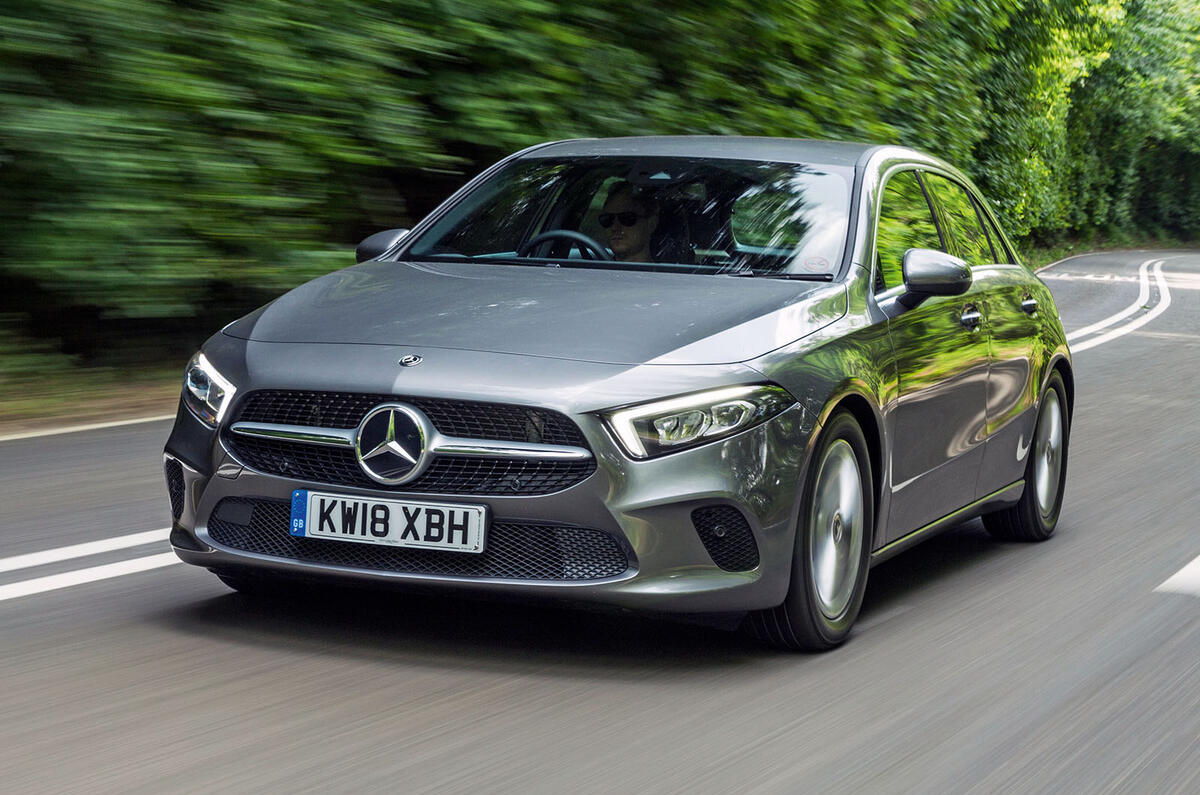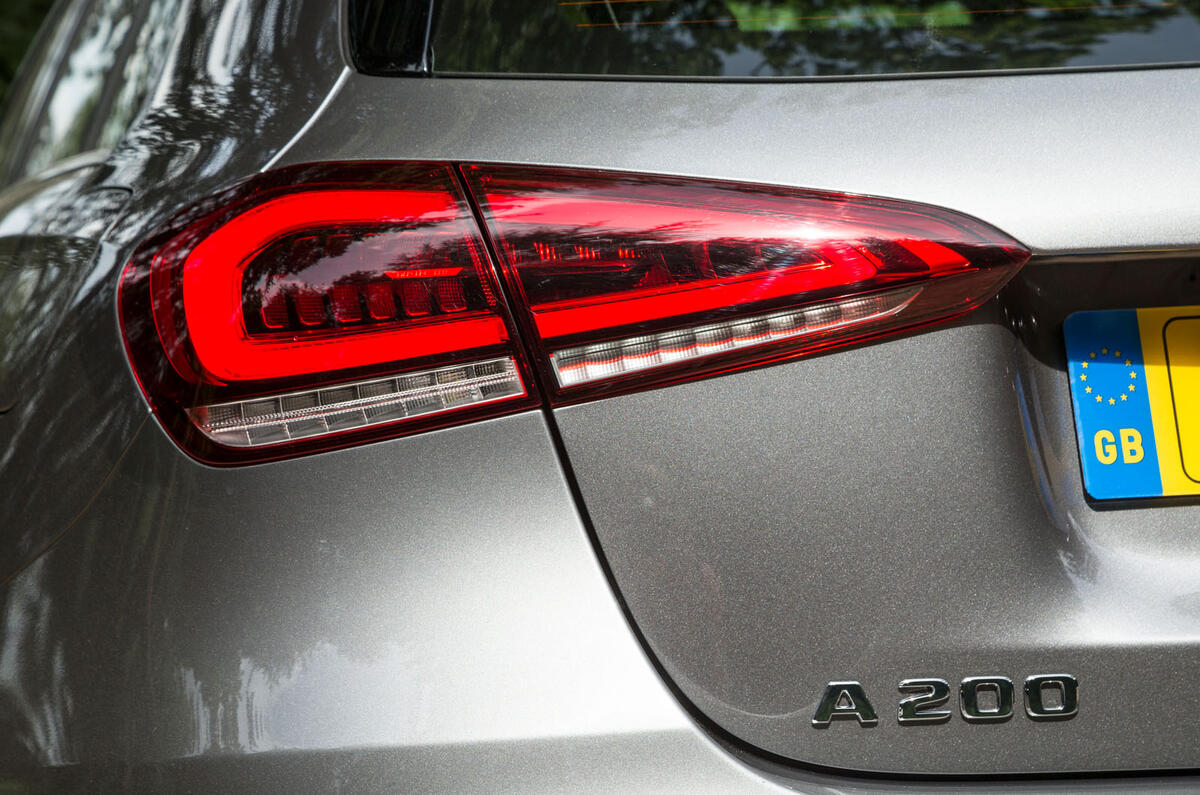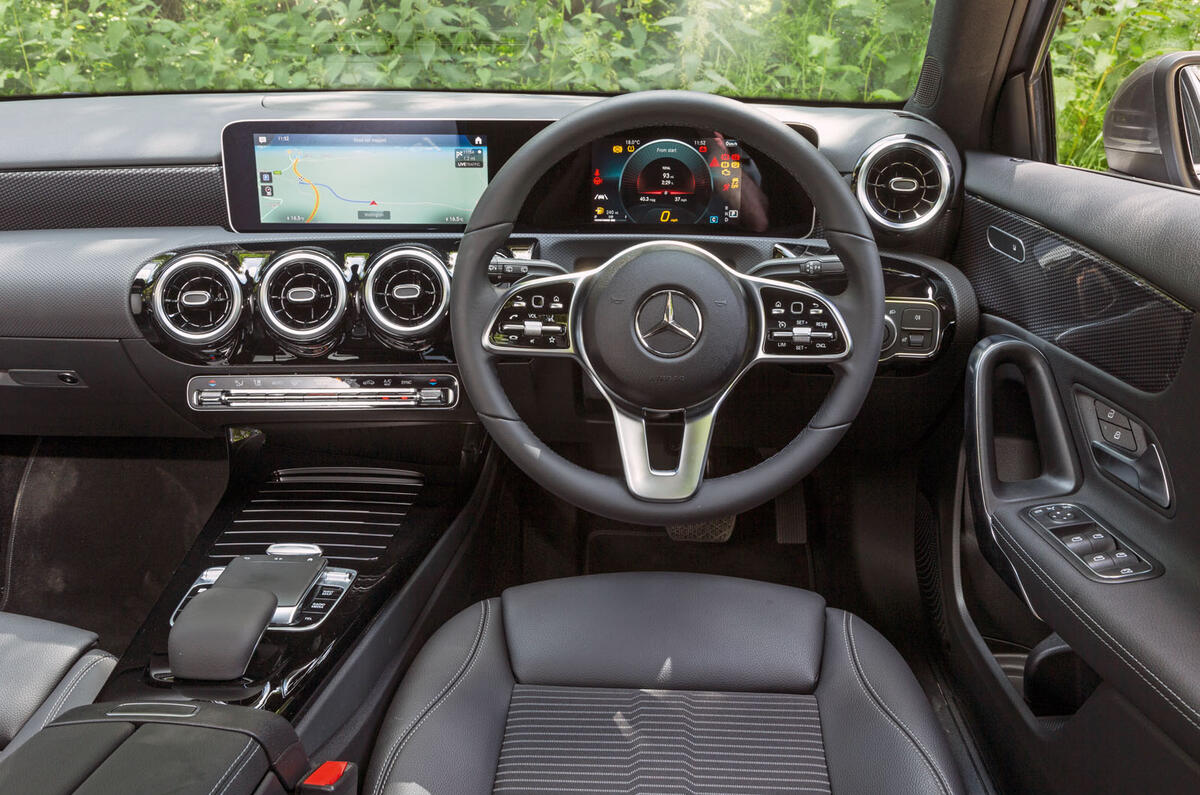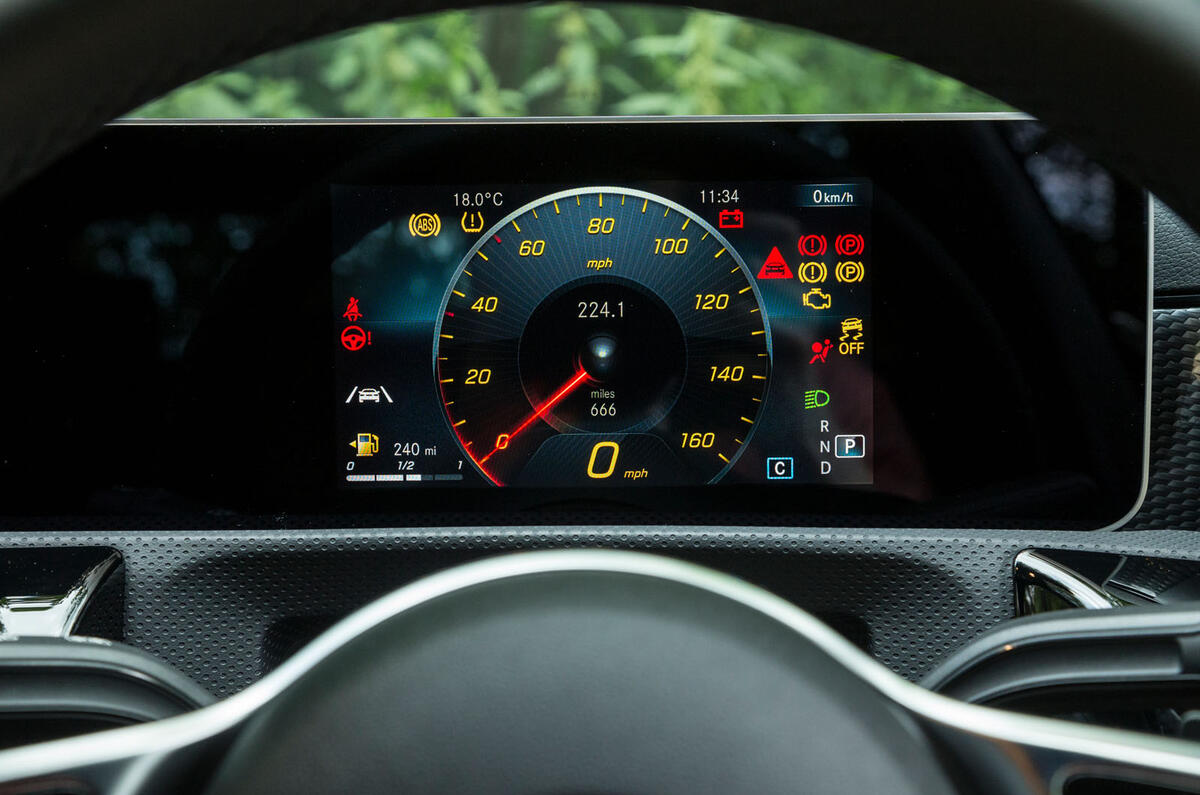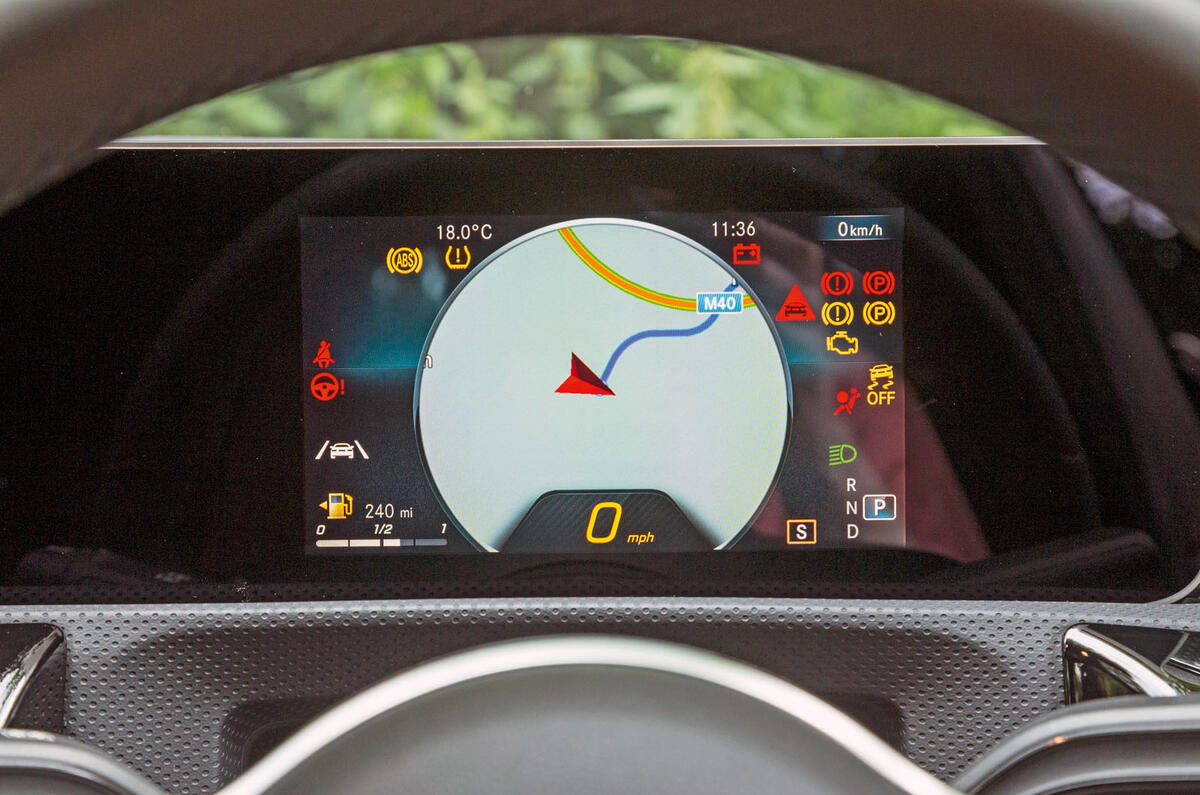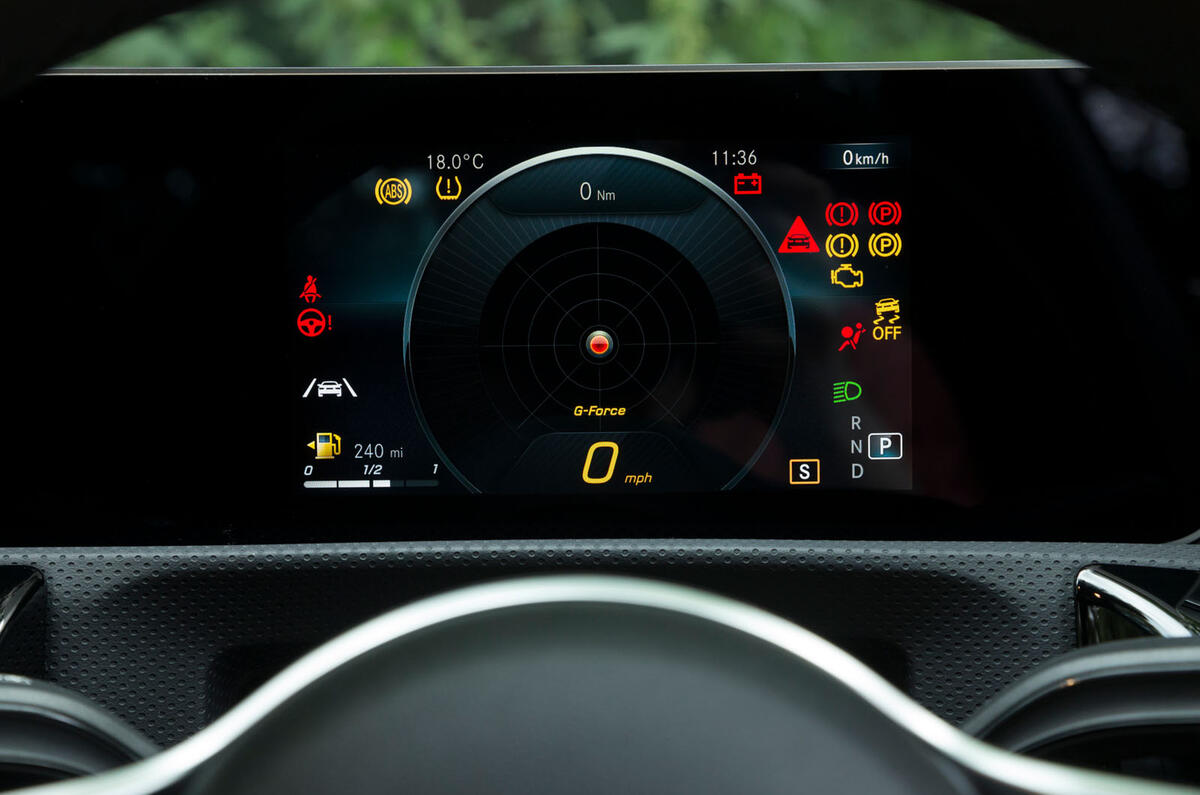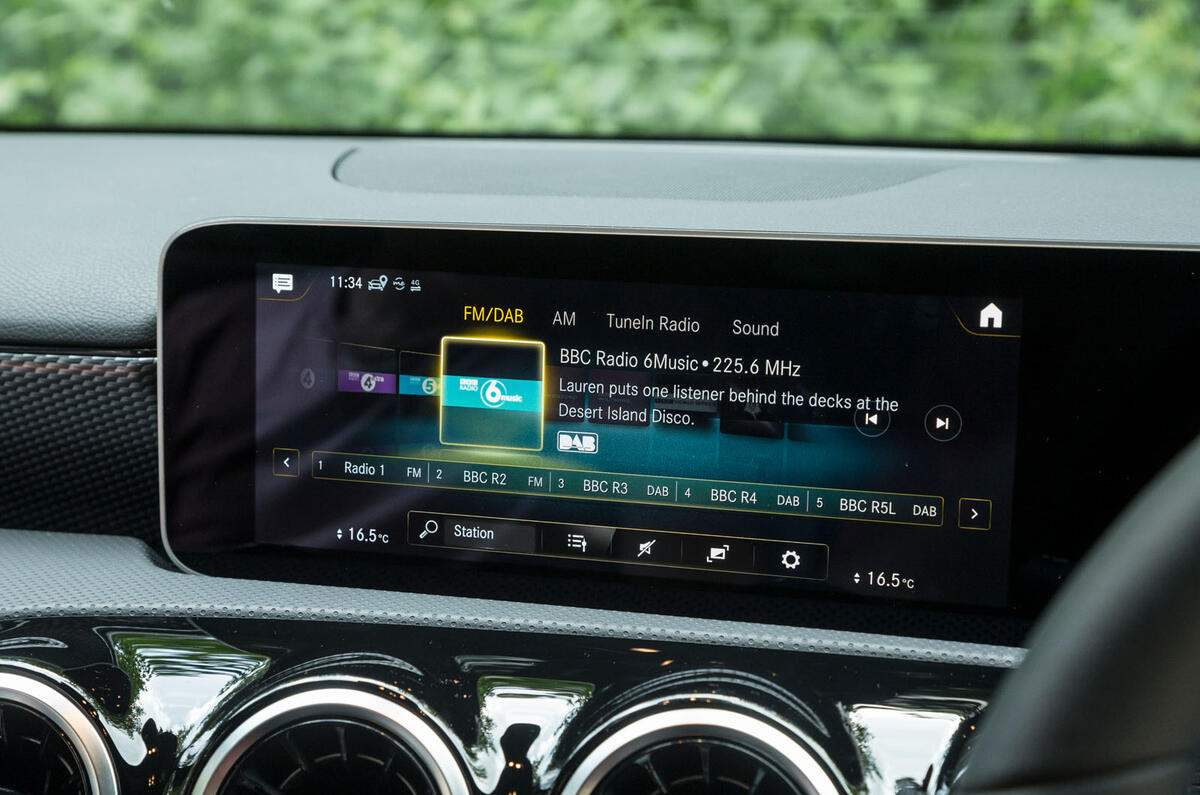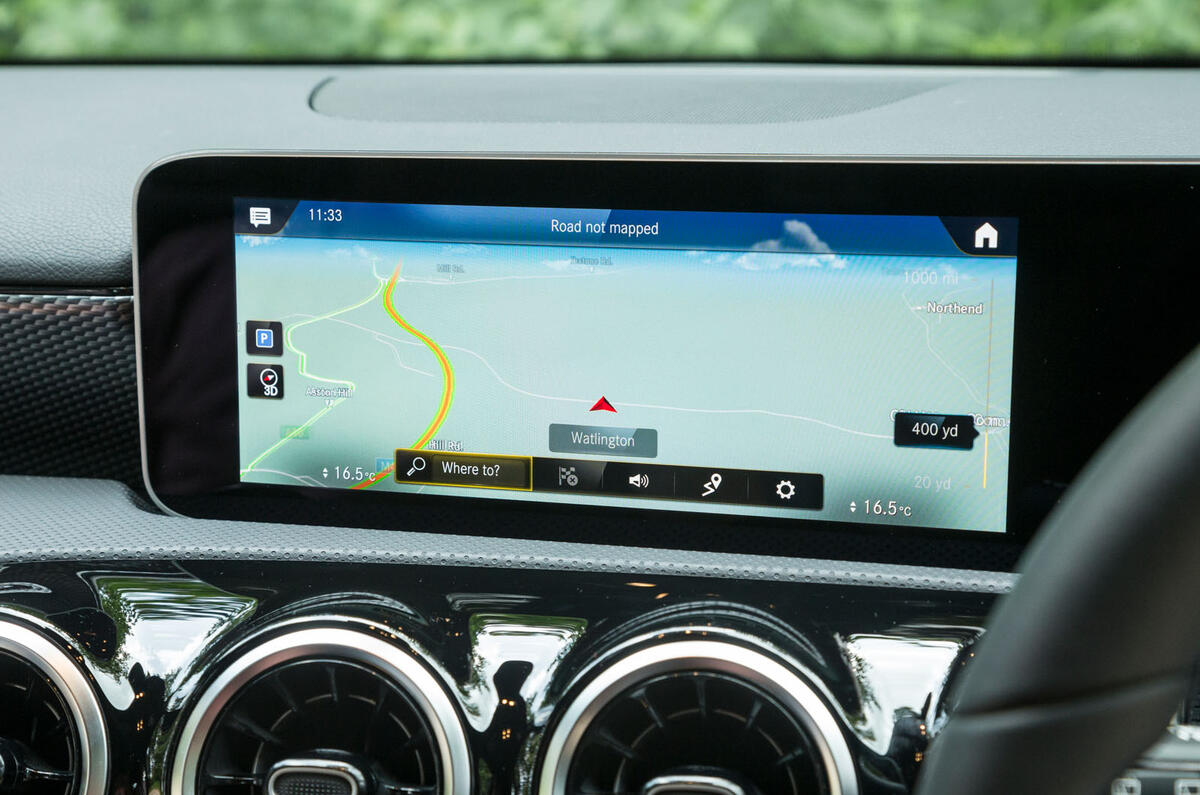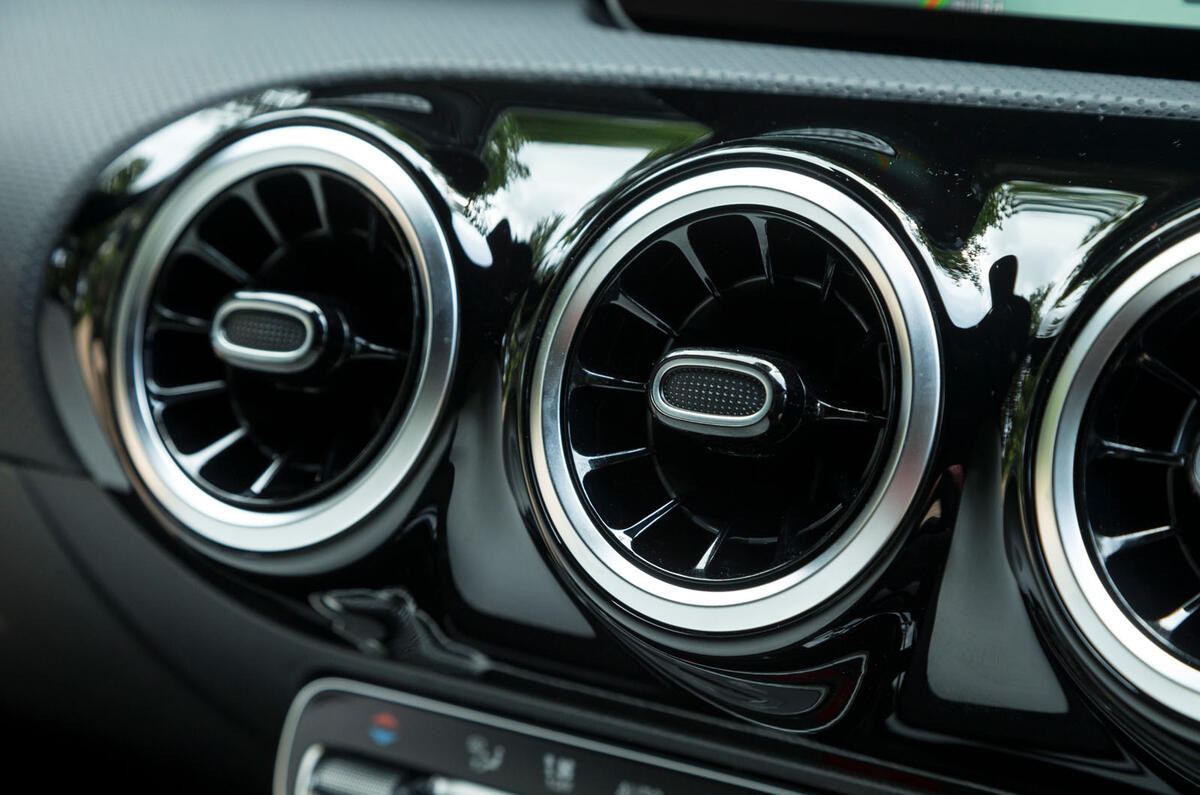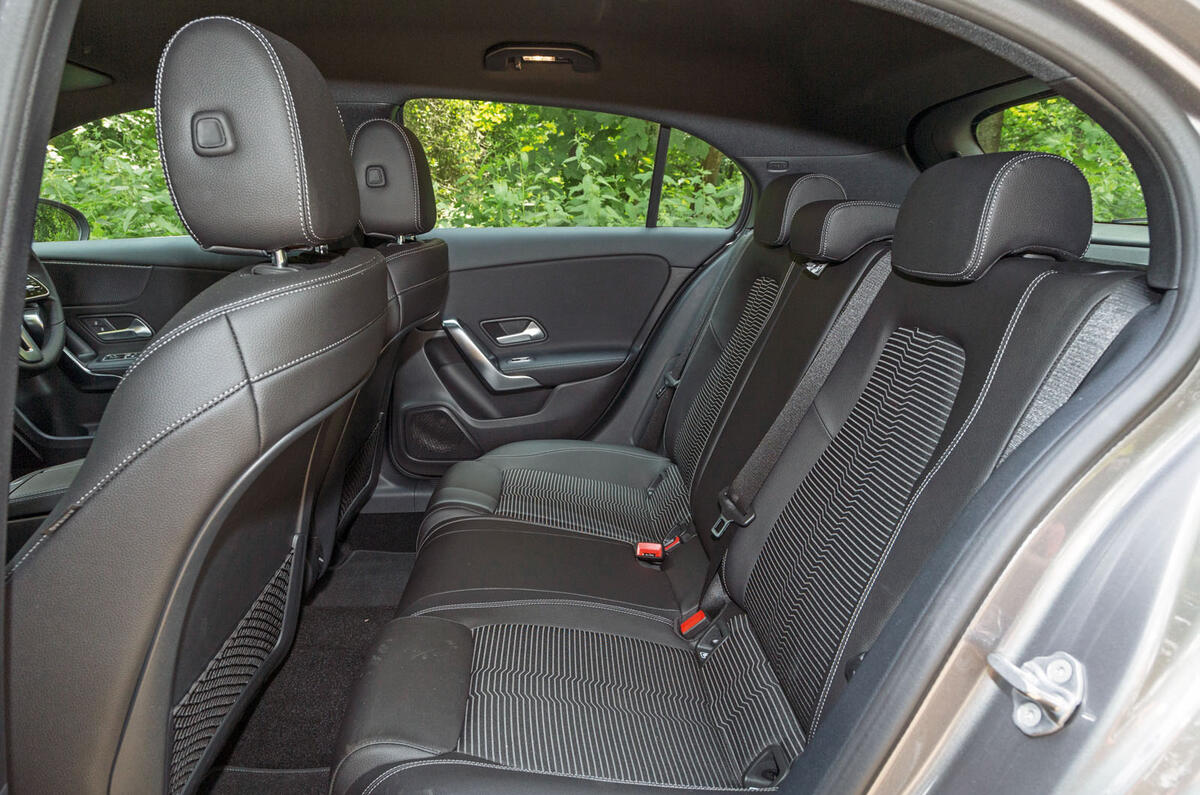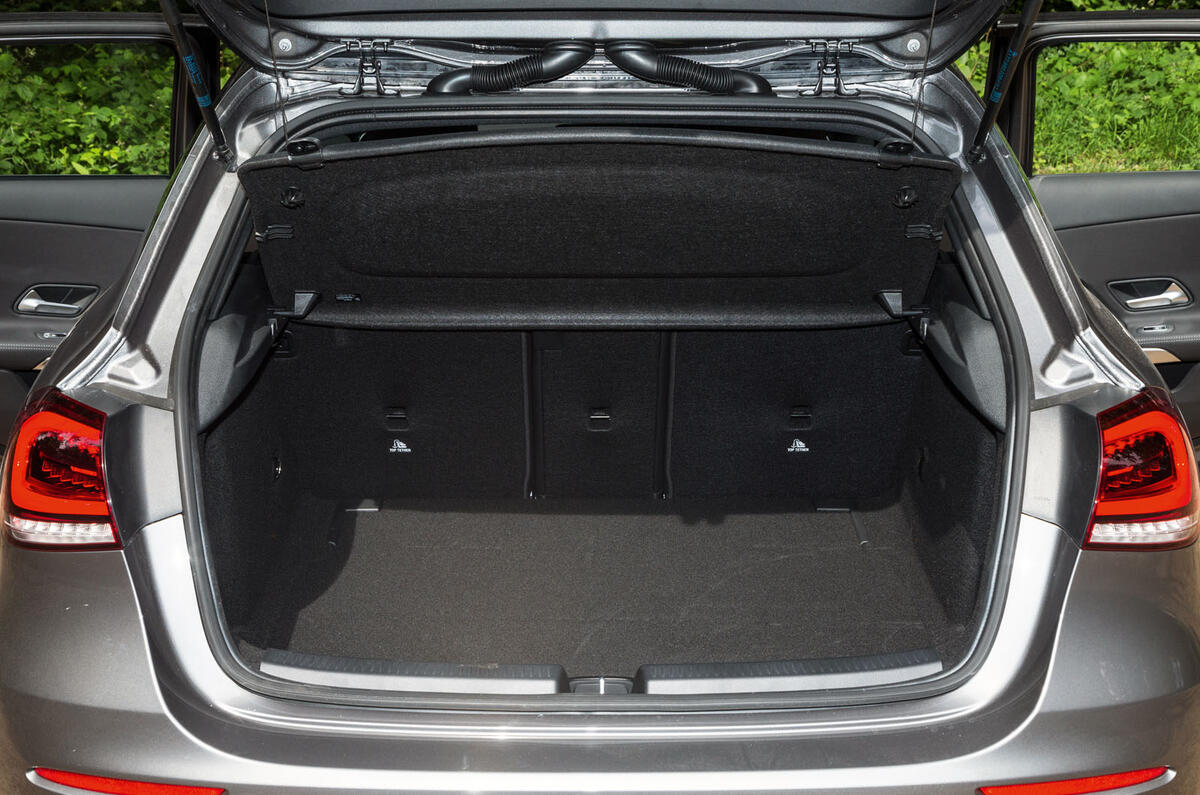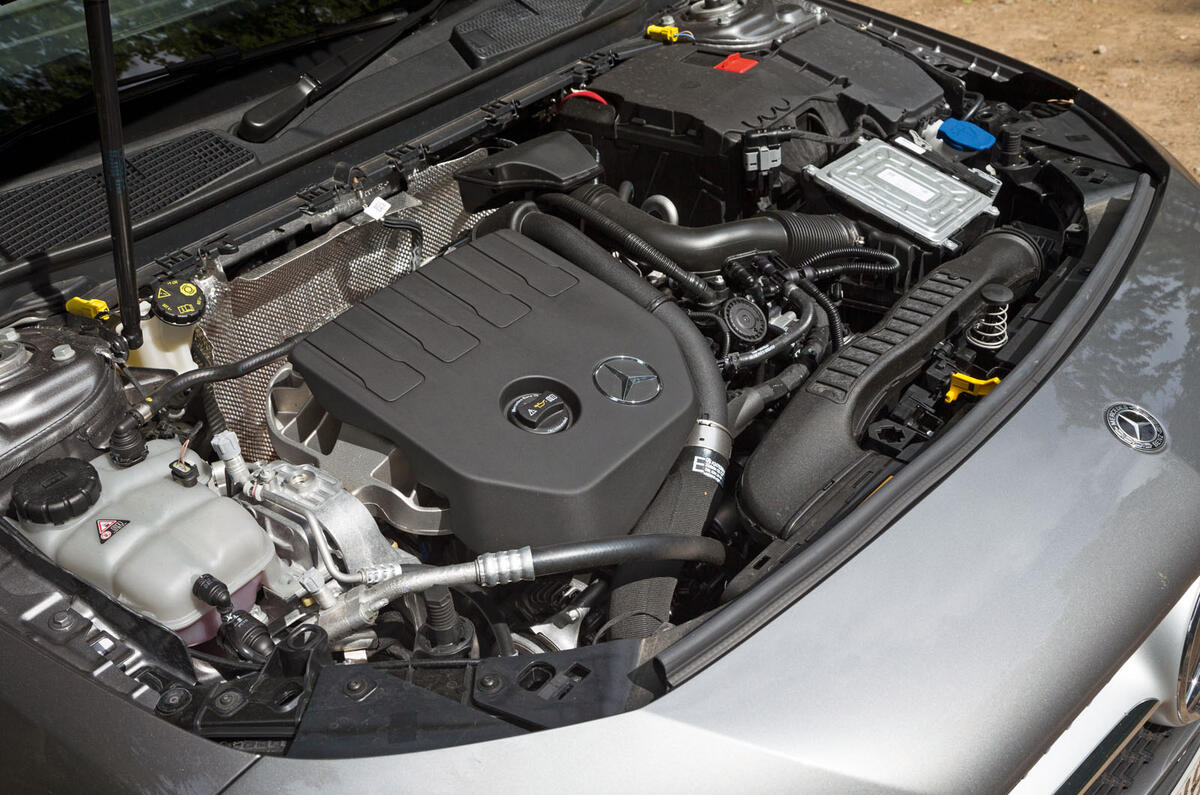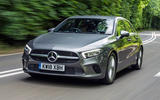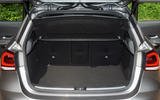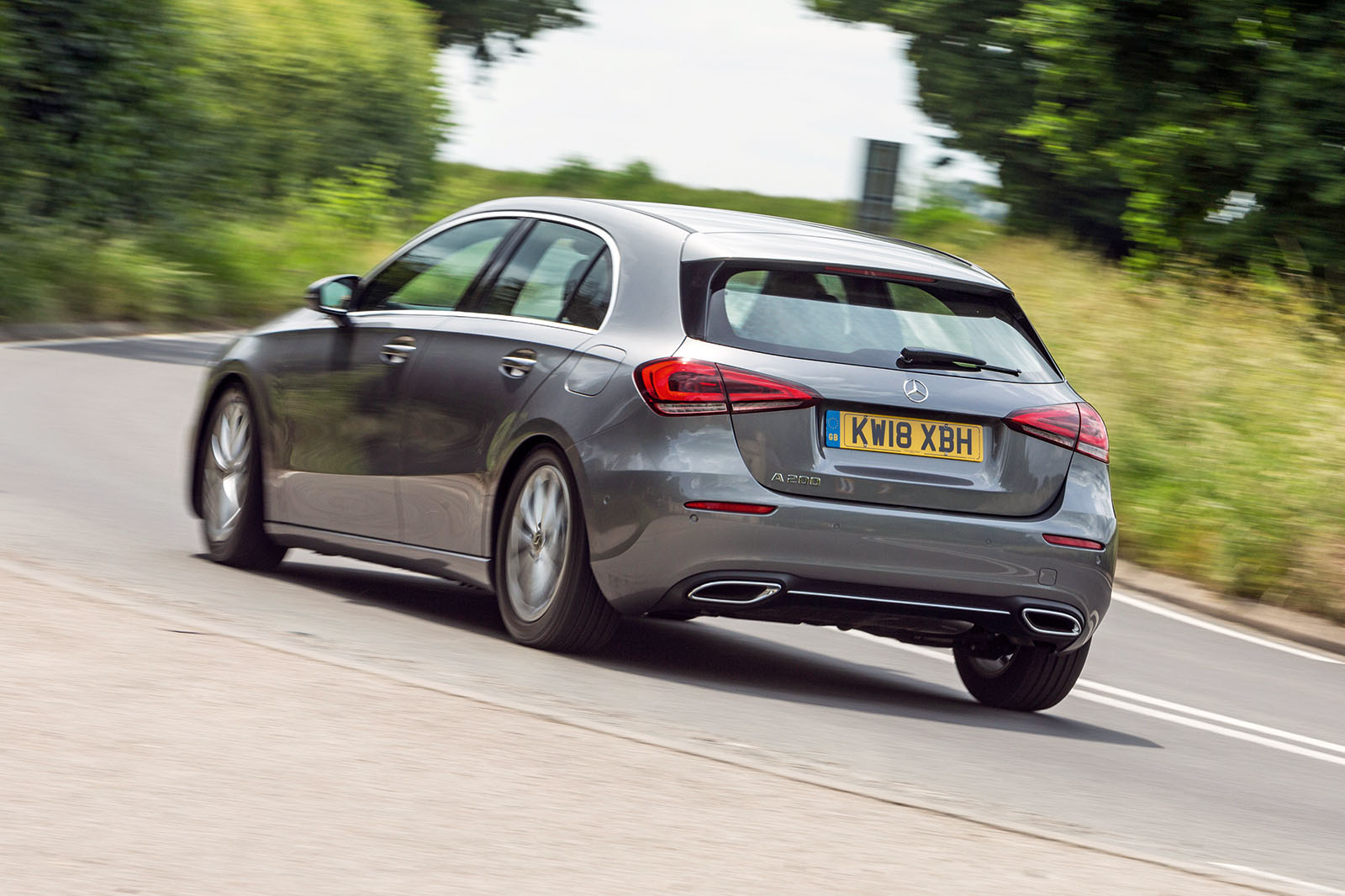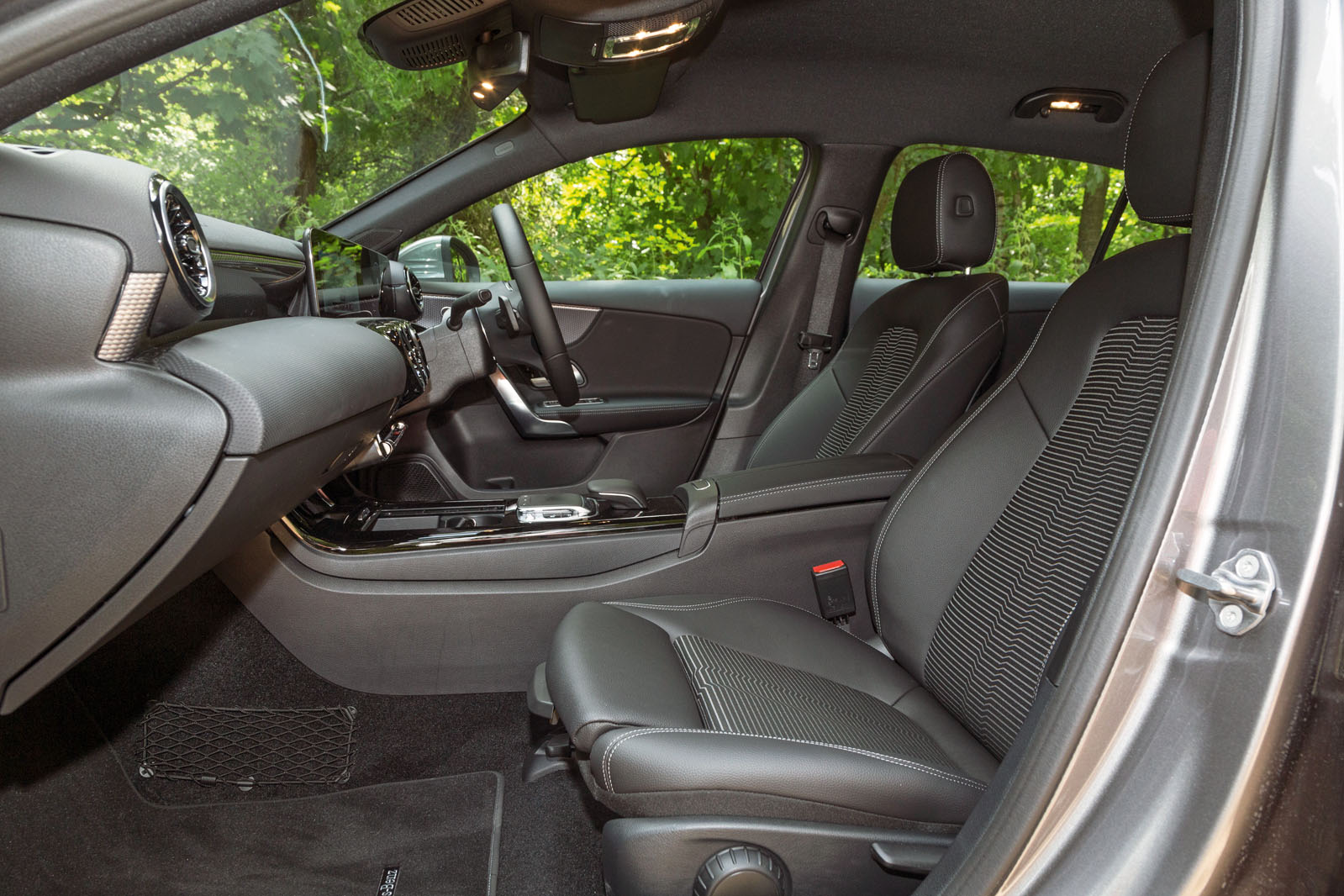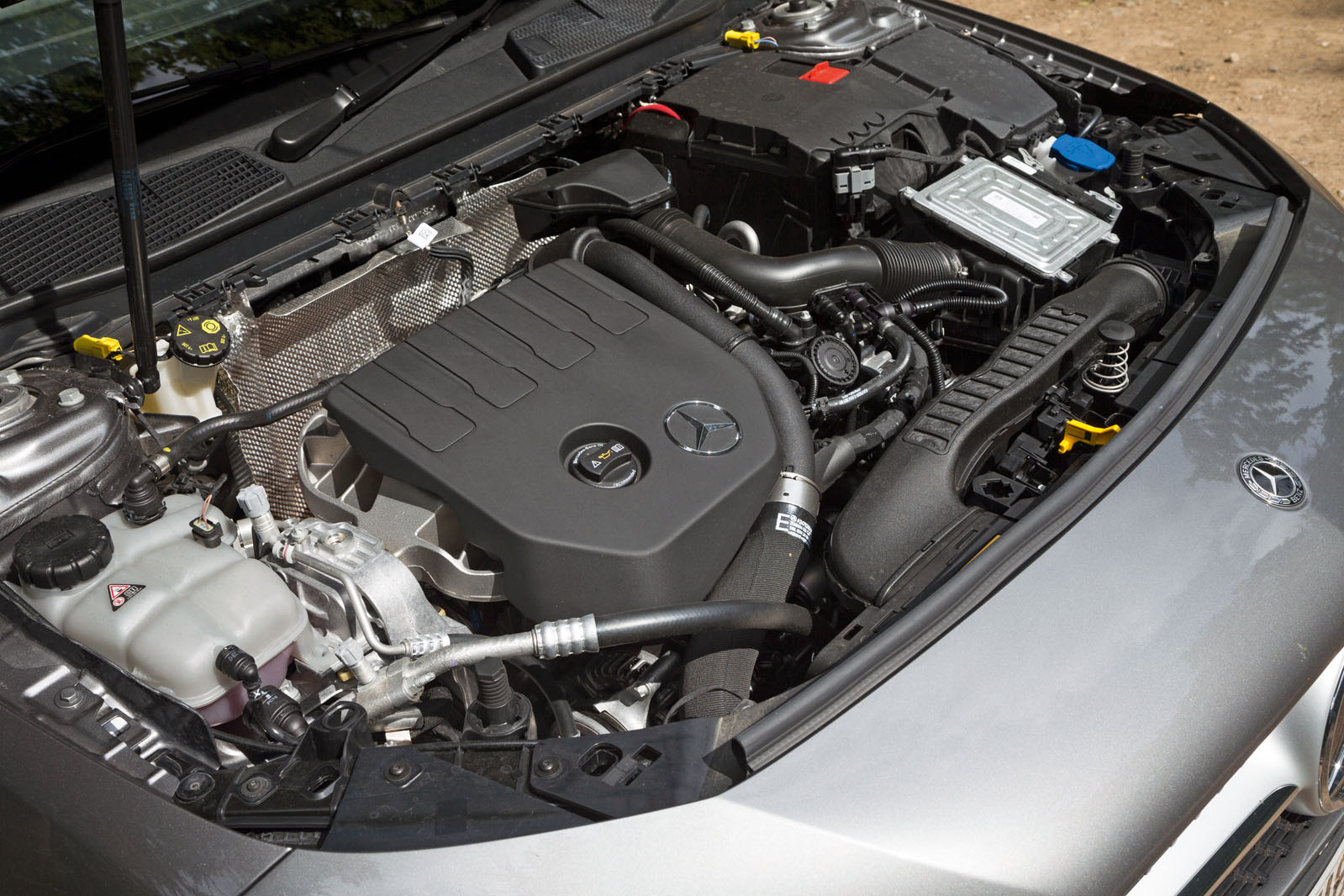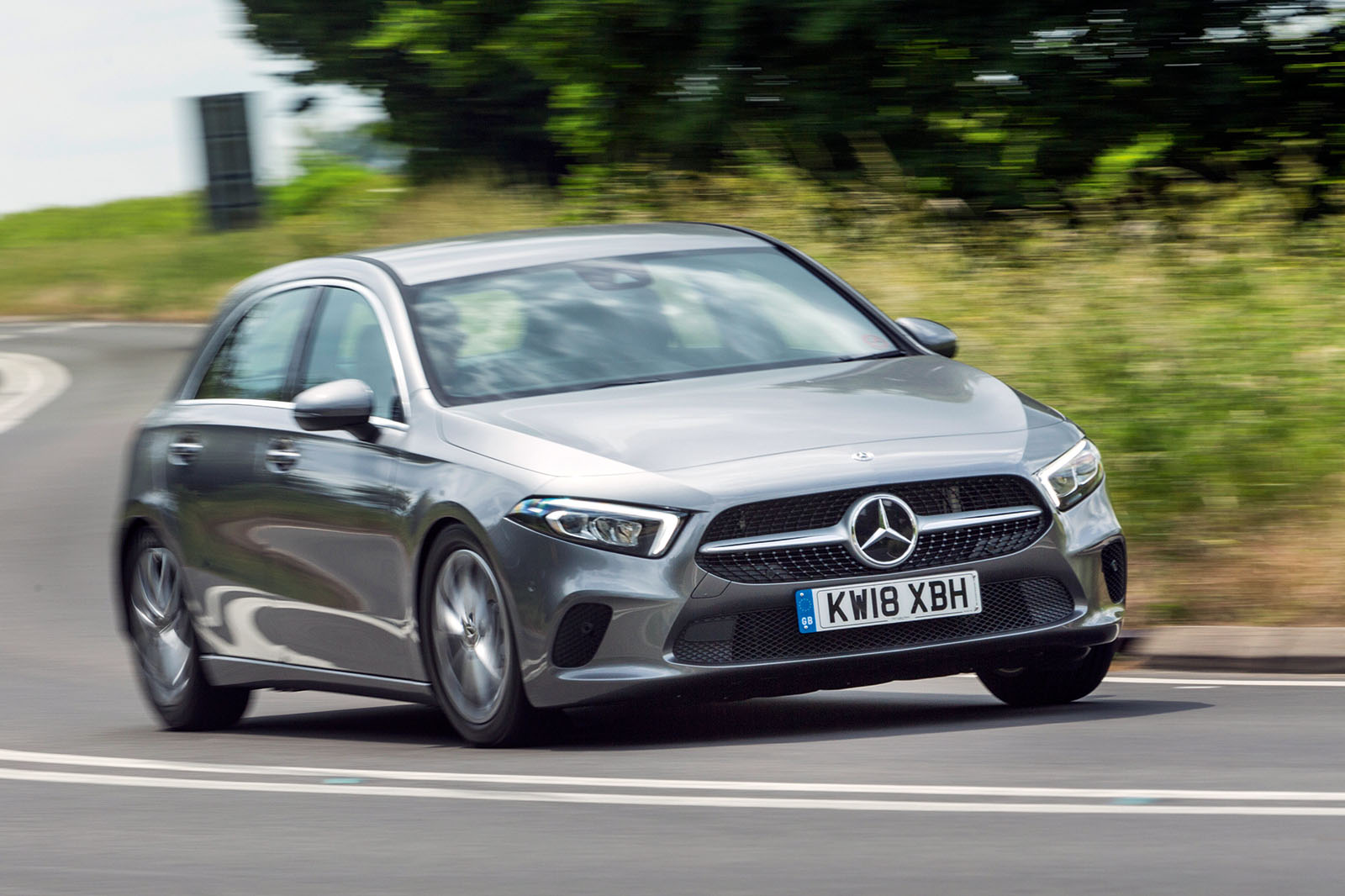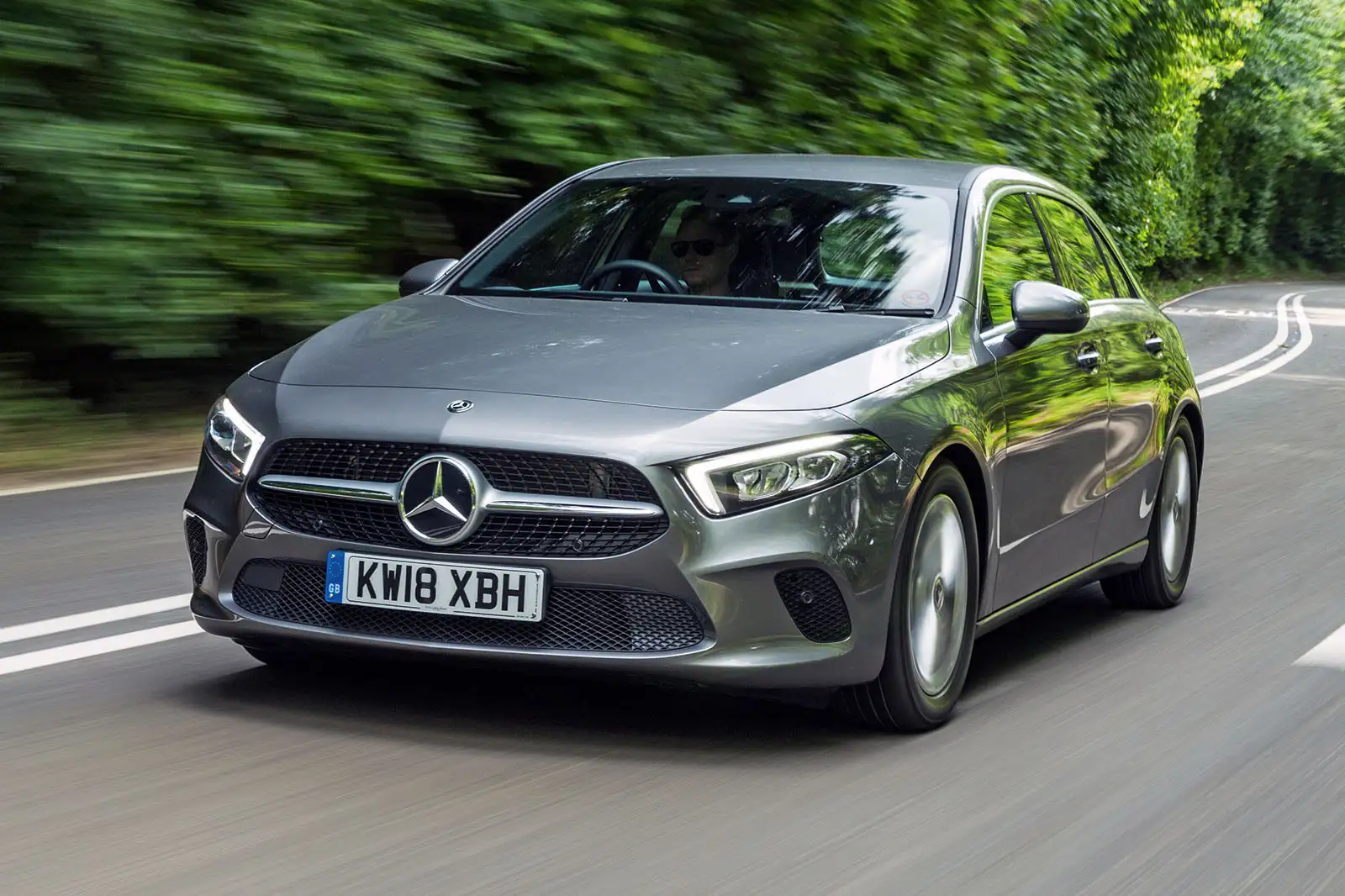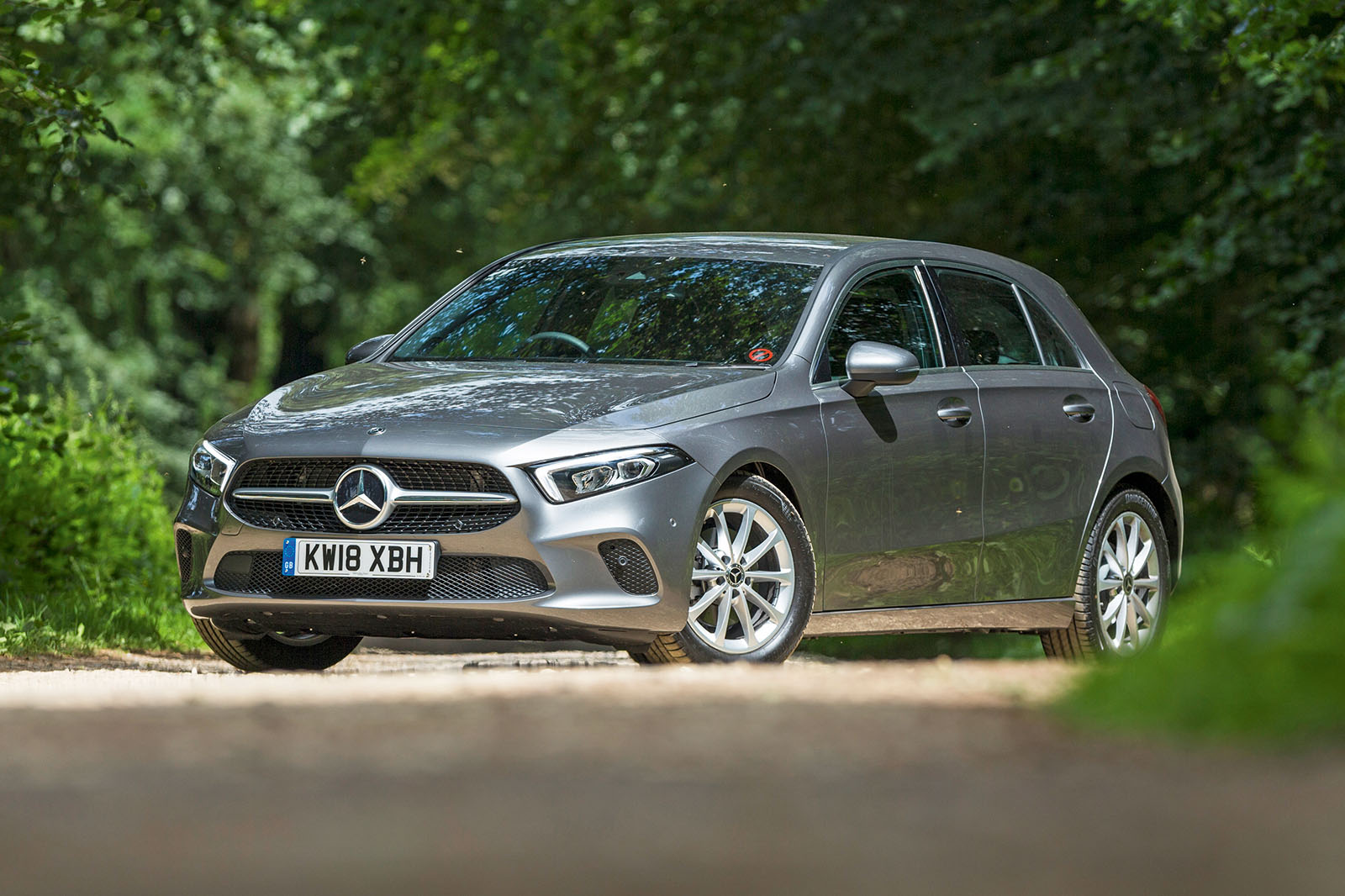If there’s one thing Mercedes has seemingly nailed with the latest A-Class, it’s the way the thing looks from behind the wheel. Here is a cabin that properly fits in with what you would expect from a premium family hatchback.
The abundant brightworking on the air vent surrounds, centre console and steering wheel draws the eye, while all that gloss black surfacing (when it’s fingerprint-free, at least) lends the smallest Mercedes an upmarket appeal that’s not too dissimilar to that of its larger siblings.
The cabin is generally all very smart, and very tidily organised and laid out. The triumvirate of turbine-esque air vents in the centre of the dashboard wouldn’t look out of place in an Mercedes-Benz S-Class and the dual digital displays that dominate the top of the dash are unlike anything we’ve seen before in a family hatch.
The fourth-generation A-Class makes use of the new MBUX (it stands for Mercedes-Benz User Experience) touchscreen infotainment system. As standard, this incorporates two 7.0in screens: one is for features such as the sat-nav and radio and the other replaces the traditional analogue instrument binnacle.
However, our test car came with the £1395 Executive package option, which ditches the media screen for a larger, 10.25in display. And what a system it is. The quality of the graphics is excellent, as is the fluidity with which it responds to your inputs.
Speaking of which, MBUX can be controlled through a new touchpad that sits on the centre console. Such systems should usually be avoided, but this one is simple to use once you’ve wrapped your head around it. The ‘Hey Mercedes’ voice control generally works well, too.
Our only criticism is the lack of a conventional USB socket, with Mercedes relying exclusively on USB-C sockets – a pain if you don’t have the right cable.
Faux carbon-fibre panelling on the doors and dash-top caused a few testers to turn their noses up, but otherwise the A-Class oozes the sort of visual appeal that rival manufacturers would do well to emulate.
This isn’t a case of appealing form coming at the expense of easy functionality, either. As far as usability is concerned, the Mercedes doesn’t really falter. Although it would be a stretch to say space in the rear is abundant, there’s enough for two adults to sit pretty comfortably, so long as they’re not especially tall, which, while not outstanding by hatchback class standards, is certainly competitive.
There’s decent knee room in the second row, and that elegantly sloped roofline doesn’t come at the cost of head room. As for the boot, it offers 375 litres of seats-up storage capacity, which extends to 1210 litres when they’re folded down.
The floor itself isn’t flush with the opening, so there is a bit of a lip to navigate – not that this will be problematic during day-today use. There are a couple of bag hooks in the boot, too.



